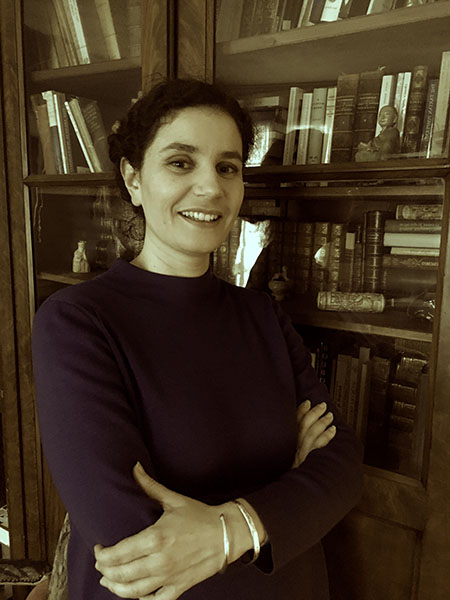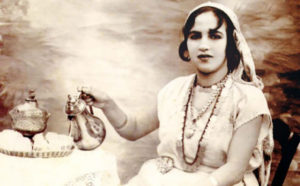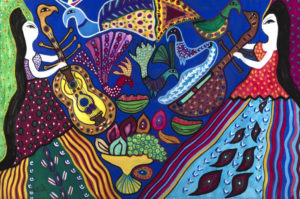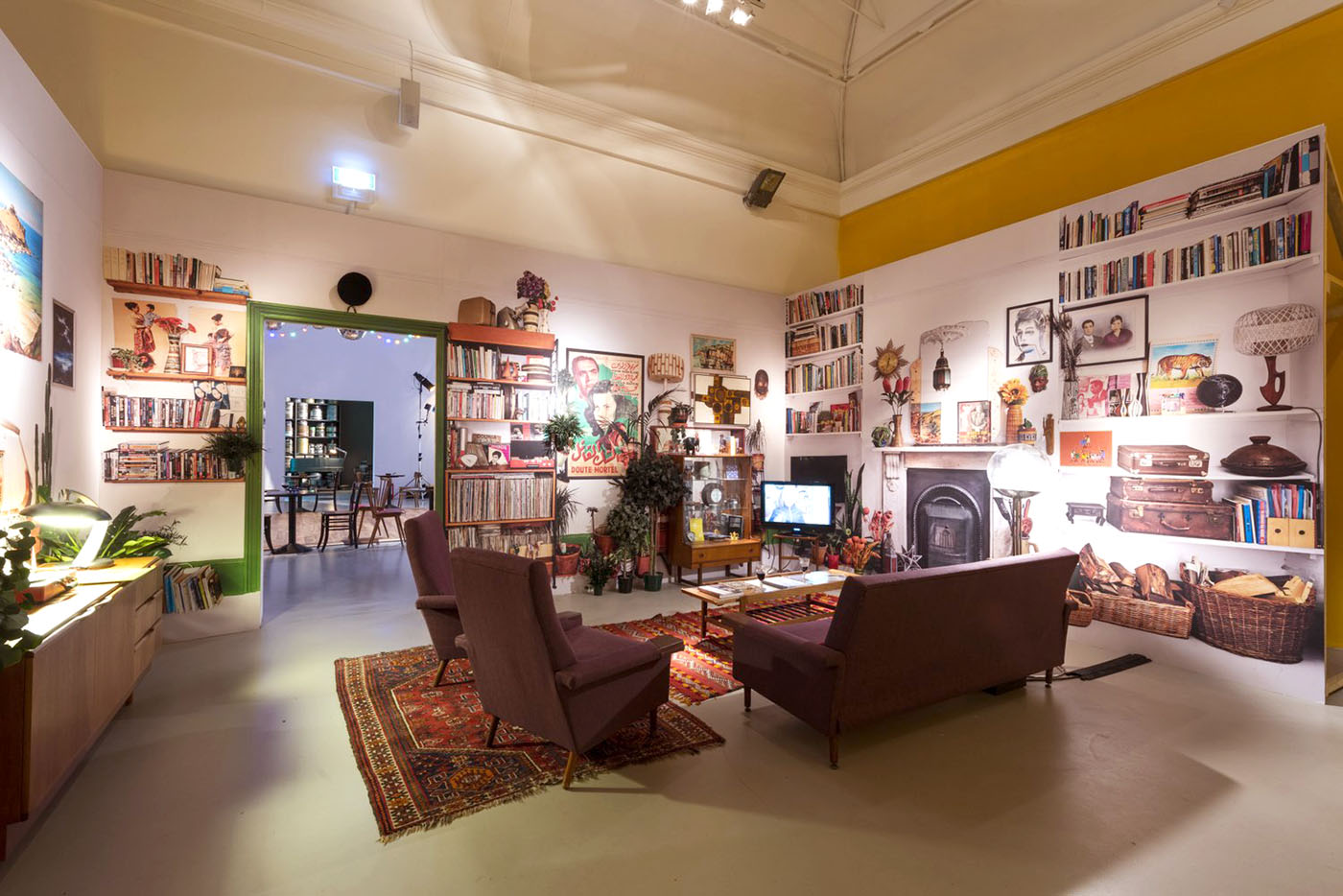
Mélissa Chemam
Video artist Zineb Sedira is not the kind of woman who will back down when faced with a direct challenge, so when a pro-Israel group attempted to have her dismissed as France’s representative at an upcoming Venice Biennale, because of past expressions of support for the Palestinian people, she held fast to her convictions. Even though she has previously described herself as a “political” artist with a small “p” only, Sedira refused to resign even as the pressure mounted.
At the end of the day, the artist — born in Paris to Algerian parents — proudly represented the country of her birth at the 2022 Venice Biennale, which had been postponed for a year due to Covid. She was the first artist of Algerian origin ever selected to represent France, and only the fourth woman since 1912. Last week, Sedira’s French pavilion in the 59th Biennale received the Special Mention of the Jury.
Her cinematographic installation, “Dreams Have No Titles” (Les Rêves n’ont pas de titre), focused on Algerian cinema of the 1960s and ‘70s. Coming at nearly the 60th anniversary of Algeria’s independence from France, the pavilion could not have been more timely, even if celebrating Algerian independence for some French might have felt like a sharp stick in the eye.
The installation transformed the French Pavilion into a cinematic experience, a cinema studio with four rooms, one of which plays her film Dreams Have No Titles at the center of this creation. The other rooms show the sets created for the work and the objects used.
Zineb Sedira emphasized the postwar collaboration between Italy, France and Algeria, highlighting, she noted “the solidarity between the trio of nations.” Most poignant was her inclusion of Gillo Pontecorvo’s 1966 political thriller,
The Battle of Algiers, which was banned in France upon release and not seen there until 1971. A pan-African, anti-colonial and pan-Arab film, it was shot in Algeria with an Italian director and an Algerian and Italian crew, and went on to win that year’s Golden Lion at the Venice Film Festival.
Sedira reconfirmed the purpose of the Venice Biennale installation for France when she said, after the Special Jury mention, “My installation celebrates above all the political, intellectual and artistic solidarities between the three countries.”
Her parents having left Algeria in the aftermath of the country’s war for independence, Sedira grew up in Gennevilliers, a working-class Paris suburb. In 1986 she moved to London, where she has lived ever since. Hence, France, Algeria and England make up Sedira’s pluralist identity. Educated at the Central Saint Martins College of Art and Design and at the Slade School of Fine Art in London, the artist trained in video while at the same time exploring postcolonial studies, which turn out to inform her identity as both an African and a European. She has said that upon having “arrived in the UK, I discovered my Africanity or Algerianity.”
At the Biennale, the room where films were projected was also inspired by the popular cinema of Gennevilliers, where Sedira and I both grew up (and where I happened to spend my teenage art house years). It is an ode to her multicultural, immigrant childhood, which was the foundation for her artistic learning.
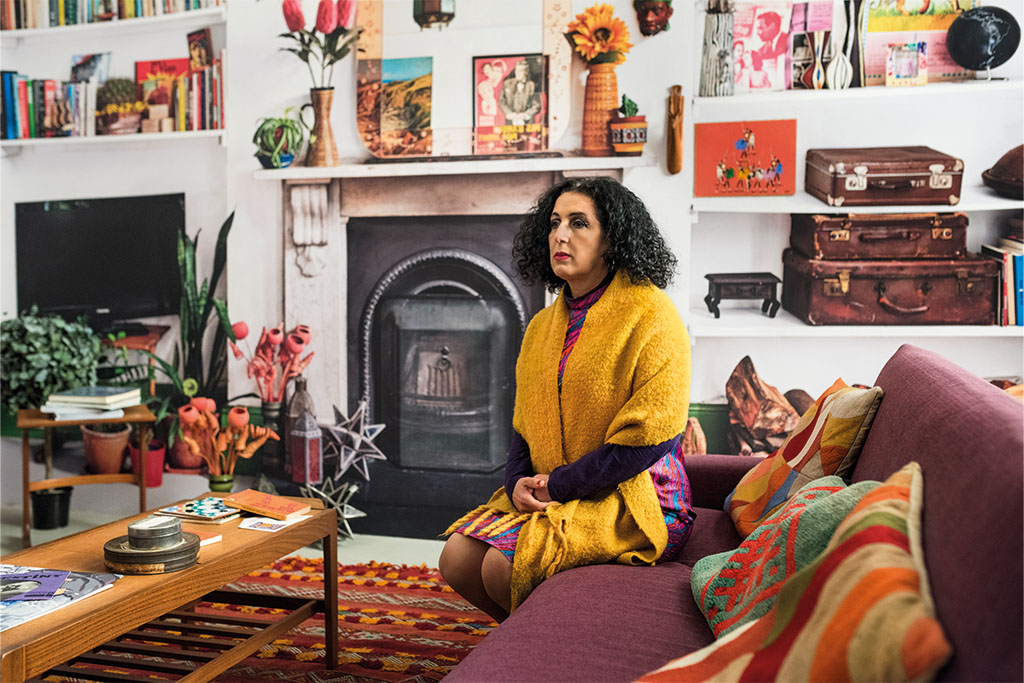
Between Algiers, Paris and London
“I spent a lot of time at the Cinémathèque d’Alger for this installation, especially with the new director, Salim Agar,” Zineb Sedira confided to me in an interview in her Brixton studio, where she has worked for the last two decades. “I became interested in film co-productions between Algeria, France and Italy, starting with The Battle of Algiers.”
She mentions other inspirations, including such films as Ennio Lorenzini’s 1964 documentary, Les Mains Libres — an essayist film in the vein of Jean Rouch or Chris Marker, very politicized, a portrait of the young Algerian state; Ettore Scola’s Le Bal; Luchino Visconti’s 1967 adaptation of The Strangers by Camus with Marcello Mastroianni —”very faithful to the book,” she told me; and Costa-Gavras’ Z. Major influences in creating the French pavilion, Sedira said, were “The avant-garde cinema of the 1960s, Chris Marker, Alain Resnais, their aestheticism, their poeticism…Algeria in the 1970s saw a militant cinema flourish, comparable to Cuban cinema, and welcomed foreign directors.”
Her goal was to “avoid clichés about Algeria, and Africa as well.”
Just as her parents left Algeria for France, Zineb Sedira felt that she had to make her own way, and left France to find herself. She arrived in London when she was 23, at a time when the Blk Art Group was gaining strength, thanks to the work of artists and curators Eddie Chambers, Lubaina Himid, Claudette Johnson, Keith Piper, Donald Rodney and Marlene Smith.
From 1992 she studied critical fine art practice at Saint Martins, and from 1998 joined the Royal College of Art in the photography department. Her work has been exhibited worldwide, and she is still based in the British capital.
After 35 years in London, Sedira has found that — unlike the French — British artists, curators and art lovers are not only interested in assimilation and labels, but also in differences, multiculturalism and uniqueness.
Her family lives between Algeria and France; she and her children in England —
as if the continuous movement towards elsewhere, the migration reproduced generation after generation, has become a means to make a fluid, multiple, complex, changing and unique identity live.
Through her films, photographs and installations, Sedira explores the question of memory in families and the places where family members interact despite exile and separation. She has often delved into her own photo albums, filmed her parents and children, and even recreated her own living room for a groundbreaking solo exhibition at Jeu de Paume in Paris, in 2019. In 2021, her work was also on display at the Photographer’s Gallery in London and Somerset House, as part of the “We Are History” exhibition.
“My parents did not pass on their memories, their complaints, or their suffering,” she says. “Neither about their war in Algeria nor about their immigration.”
One imagines the wrought emotions that must have existed between the artist and her family in childhood and adolescence. Their memories of the shepherds of the highlands, the values of the family, between traditions, religion and solidarity, have marked her. Her modest childhood in Gennevilliers was also inspired by the local cinema, frequented by the immigrant communities of the working-class, mixed-race Paris suburb.
“My work does not explore history writ large,” Zineb Sedira added in her Brixton studio. “It explores my own childhood memories, my family ties, as if I were charged with passing on what was almost lost in the waves of migration.”
An art where politics is personal
This work brilliantly continues the memorial, emotional and personal work of the artist, who has always left a great deal of space for her community and family in her films and installations, traveling to Algiers to film and photograph the nostalgia or hope of departure, talking to her mother or children on camera, in Arabic, French and English (as in her 2003 film Mother, Father & I), and even reproducing her own living room for the famous Jeu de Paume gallery in Paris, to discuss the relationship between intimacy and creation.
In 2006, her evocative 19-minute film Saphir, shot in Algiers and edited in split screen, told of the contrasting experiences of two inhabitants of the Algerian capital, and their relationship with the immense clear sky and the “shimmering indigo sea,” visual metaphors of another world, and a desire to escape across the water to Europe. It was soon clear that the woman in the film is the daughter of former French settlers, while the man is a native Arab dreaming of Europe. “Saphir” refers to the Hotel Safir, one of the monuments of French colonial Algiers, and from which part of the films were shot. In French, the word refers to the dark blue, precious and shiny sapphire jewel; but in Arabic, the word means “ambassador,” one who can represent his country abroad and cross borders as he wishes.
“Saphir is very similar to the work I produced for Venice,” Zineb Sedira told me. “It’s an aesthetic link, inspired by the visual experiments of the 1960s, the poetics of filmmakers like Chris Marker and Alain Resnais, but also of Algerian filmmakers, with a voiceover to complement it. It also reveals how complex my identity has become: I am neither a French artist, nor an Algerian artist, nor a British artist; I am a bastard child of the three influences, and in addition, you have my Berber origins, and North African heritage.”
Her photographic and video art is a way for her to reflect on social and postcolonial issues. But Sedira emphasizes that her art is based on an emotional and authentic practice, and that she wants to avoid academic discourse, to connect with “normal people.” This is one of the reasons why her work, like that of Sonia Boyce (who represents Britain in Venice and won the Golden Lion), addresses family ties and the real experience of colonial history more than intellectual analysis.
“I can’t separate my artistic activity from my intimate life as a woman, daughter, mother, citizen, etc…That is why my work is so focused on the intimate level. That’s where I find the connection to the larger story. It’s not always the sexiest way to represent it, but it’s important to me. It’s also where my activism finds its energy.”
Sedira is also concerned with “repairing the divide between North Africa and sub-Saharan Africa,” a divide maintained by years and waves of colonial legacy on all sides, by European as well as Arab and Ottoman leaders.
But one of the main questions that continues to haunt her is: How to represent what we really want to criticize? — a key issue for artists but also for activists who are committed to a process of “decolonization” of art, society and daily life.
The artist has had to fiercely defend her appointment in France, when several rightwing intellectuals accused her of being radical, particularly in her defense of the Palestinian rights. Despite the controversy, Zineb Sedira is part of a growing list of French artists of Algerian origin in the art world, with her gallery owner Kamel Mennour, the internationally recognized artist Kader Attia, as well as Mohamed Bourouissa and Bruno Boudjelal.
“I felt honored to receive the news of representing France at the Venice Biennale,” she said. “I recognized a major turning point for French contemporary art and our common history: An Arab-Berber-Algerian-French woman based in London representing France! What I was not prepared for was the level of discrimination and intimidation in response to my nomination. I have been the target of defamatory accusations that are designed not only to oppose my nomination, but also to cut me off from my artistic and intellectual affiliations, friendships, and solidarity.”
In my view, Zineb Sedira has spent most of her career in England because France was not necessarily ready for her emergence, for the beauty and tenderness of her claims, which leave no room for anger or violence. Nevertheless, her background makes her feel “neither French nor Algerian nor British, but bastard…” And this, perhaps, is the secret to her strength.



